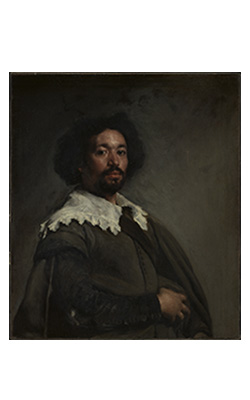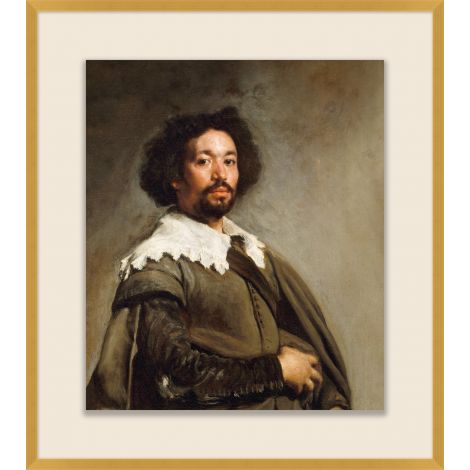Local Storage seems to be disabled in your browser.
For the best experience on our site, be sure to turn on Local Storage in your browser.
Portrait of Juan de Pareja

Our Inspiration: Juan de Pareja
Velázquez (Diego Rodríguez de Silva y Velázquez) (Spanish, 1599–1660)
Oil on canvas, 32 x 27 1/2 in., 1650
Purchase, Fletcher and Rogers Funds, and Bequest of Miss Adelaide Milton de Groot (1876–1967), by exchange, supplemented by gifts from friends of the Museum, 1971 1971.86
Velázquez most likely executed this portrait of his enslaved assistant in Rome during the early months of 1650. According to one of the artist's biographers, when this landmark of western portraiture was first put on display, it "received such universal acclaim that in the opinion of all the painters of different nations everything else seemed like painting but this alone like truth." Months after depicting his sitter in such a proud and confident way, Velázquez signed a contract of manumission that would liberate him from bondage in 1654. From that point forward, Juan de Pareja worked as an independent painter in Madrid, producing portraits and large-scale religious subjects.

Our Inspiration: Juan de Pareja
Velázquez (Diego Rodríguez de Silva y Velázquez) (Spanish, 1599–1660)
Oil on canvas, 32 x 27 1/2 in., 1650
Purchase, Fletcher and Rogers Funds, and Bequest of Miss Adelaide Milton de Groot (1876–1967), by exchange, supplemented by gifts from friends of the Museum, 1971 1971.86
Velázquez most likely executed this portrait of his enslaved assistant in Rome during the early months of 1650. According to one of the artist's biographers, when this landmark of western portraiture was first put on display, it "received such universal acclaim that in the opinion of all the painters of different nations everything else seemed like painting but this alone like truth." Months after depicting his sitter in such a proud and confident way, Velázquez signed a contract of manumission that would liberate him from bondage in 1654. From that point forward, Juan de Pareja worked as an independent painter in Madrid, producing portraits and large-scale religious subjects.



